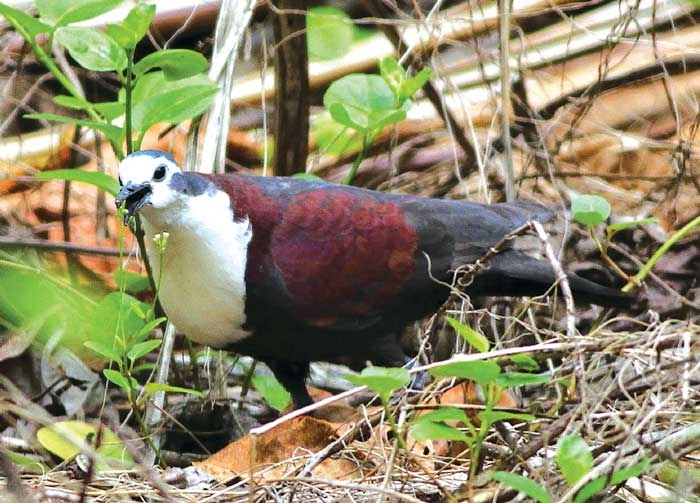IMAGINE yourself in a helicopter, over the open ocean, for 100s of kilometres and what seems like hours. You’re attempting to play it cool, hoping your pilot has no trouble finding the small ‘pin prick’ of an island that is your ‘job site’ for the coming weeks, but the beads of sweat on your forehead betray you. “Coming in for a landing!” he shouts over the motor as you begin to descend on a sandy spit of land bordered by palm trees. However, by day ten when this has become a daily routine, you get used to it – at least I did.
I was working on six islands in the remote Acteon and Gambier archipelagos of French Polynesia for six weeks. I had one goal – to protect the Critically Endangered Polynesian Ground-dove (Alopecoenas erythropterus) and the Endangered Tuamotu Sandpiper (Prosobonia parvirostris), or the Tutururu and the Titi as they are referred to by our local partner communities, from invasive species. The Polynesian Ground-dove is a fairly understated but pretty little bird that spends most of its time, as you might guess, on the ground.
Looking at it you would never presume that it is one of the most imperiled bird species in the world. I certainly didn’t know it when I met my first of these eight years ago, nor did I expect my professional fate would become intertwined with that of the doves. This Critically Endangered dove is one of the world’s rarest birds. In fact, it is estimated that there are less than 150 remaining on the entire planet (some say less than 50). Even though these islands are in the middle of the Pacific Ocean over 1500km from Tahiti, their isolation has not protected them from a negative human legacy.
…..to read more buy your personal copy at
